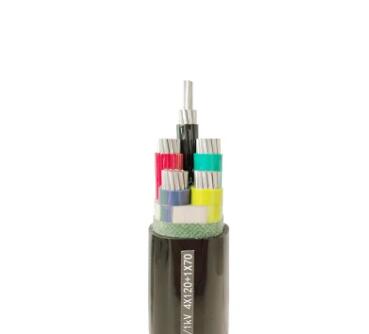How do you determine the appropriate wire size for a specific electrical application
2023-11-01
To determine the appropriate wire size for a specific electrical application, you need to consider several factors, including the intended use, the electrical load, voltage, temperature, and distance the wire will span. Here are the steps to determine the wire size:
1. Calculate the Load: Determine the electrical load the wire will carry. This load is usually expressed in amperes (A) or watts (W). If you are not sure about the load, consult the device or equipment specifications or consult with an electrical engineer.
2. Voltage: Identify the voltage of the electrical circuit. Different voltage levels may require different wire sizes to ensure safe and efficient current carrying.
3. Distance: Determine the distance the wire will span between the power source and the load. Longer distances can lead to voltage drop, which must be considered when sizing the wire.
4. Allowable Voltage Drop: Determine the allowable voltage drop for the application. Voltage drop is the reduction in voltage along the length of the wire due to its resistance. The National Electrical Code (NEC) and local electrical codes often provide guidelines for acceptable voltage drop values.
5. Wire Material: Consider the type of wire material you plan to use, such as copper or aluminum. Copper is more conductive than aluminum but may be more expensive.
6. Ambient Temperature: Take into account the ambient temperature of the installation location. High temperatures can affect a wire's ampacity (current-carrying capacity). You may need to derate the wire's ampacity if the temperature exceeds certain limits.
7. Derating Factors: Determine if any derating factors need to be applied based on installation conditions, such as the number of conductors in a conduit, the wire's bundling, or the presence of insulation. These factors can affect the wire's ability to dissipate heat.
8. Voltage Type: Identify whether it's a direct current (DC) or alternating current (AC) application. Wire sizing considerations can differ for these two types of current.
9. Use Wiring Tables and Calculations: Refer to electrical code tables, wire sizing charts, or perform electrical calculations to determine the minimum wire size required for the application. These tables provide ampacity ratings for various wire sizes based on different conditions. The NEC, for example, provides tables and calculations for this purpose.
10. Safety Margin: Consider adding a safety margin to your calculations to ensure the wire can safely handle the load without overheating or excessive voltage drop. Many professionals add a 20% safety factor to their calculations.
11. Local Codes and Regulations: Check local electrical codes and regulations, as they may have specific requirements and standards that you need to adhere to.
12. Consult an Expert: If you are unsure about the wire size or have a complex application, it is advisable to consult with a licensed electrician or electrical engineer who can provide guidance and expertise.
Properly sizing the wire for your electrical application is critical to ensure safety, efficiency, and compliance with electrical codes and regulations. Incorrect wire sizing can lead to overheating, voltage drop, and potentially dangerous conditions.



